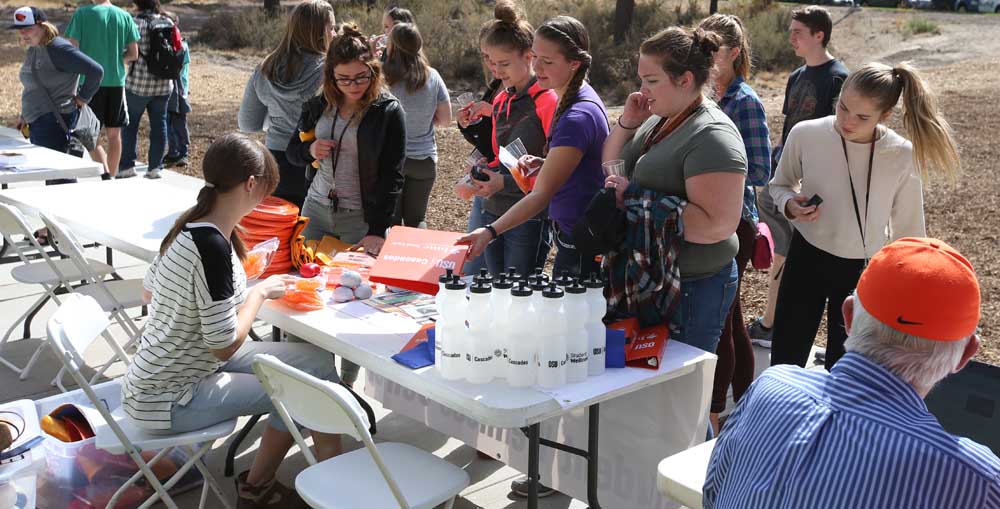Guest column: Expanding OSU-Cascades is ‘irrational’
Published 6:05 am Tuesday, July 18, 2017

- Freshman Jeaneva Senko, 18, center, grabs an OSU-Cascades binder as she takes in the day before classes started in September, 2016. (Andy Tullis / The Bulletin file photo)
Several recent articles about state bonding for Oregon State University-Cascades missed critical elements of the larger story. Believe it or not, OSU-Cascades fared better than many of us anticipated — especially given the $1.6 billion gap in revenues we faced at the beginning of the 2017 legislative session.
For starters, there is no rational argument for significantly increasing public university capacities. The need was not proven. Despite enthusiastic regional support, there is no objective justification for investing scarce resources into adding capacity at OSU-Cascades given statewide enrollment trends.
Trending
With respect to all involved, local popularity is not cause to reach beyond our grasp.
Public universities have struggled with enrollment for several years. We do not anticipate full capacity at our institutions this coming year.
Although understandable, the push for expanding OSU-Cascades at this moment is irrational given our circumstances. As stewards of the public trust, we must guard against overbuilding capacity. Many of us have watched with concern as Pennsylvania has closed campus classrooms because of poor strategic planning.
Secondly, the $9 million in dedicated bonding for expansion site reclamation is a real investment: it will provide sufficient resources for preparation for development — when warranted. While local enrollment growth would perhaps be incentivized through construction of residence halls, the population does not require these investments.
It is critical for us to remember the mission of OSU-Cascades: providing a 2+2 learning environment, a path for local students to complete a university degree. Our investments support the mission. The transition into a four-year, standalone university remains uncertain given our budgetary realities despite the claims of OSU President Edward Ray. OSU-Cascades is not a standalone eighth state university — at least not yet.
The outrage expressed by OSU-Cascades supporters overlooks reality: OSU fared quite well overall.
Trending
Many of us are sympathetic to the frustration felt by advocates seeking new opportunities, but we made the conservative choice: prioritizing investments in existing institutions while providing a “down-payment” on future development.
It is disappointing and disheartening for many of us who believe in higher education to see so little appreciation for investments made, given the scale of the budgetary challenges we seek to navigate.
Frankly, had the leadership of OSU prioritized OSU-Cascades — ahead of Corvallis projects — the outcome may have been different. We had limited funds and an inability to advance critical revenue reforms that could yield greater financial opportunities for investment. Ironically, many of the voices (including some Central Oregon legislators) who are bemoaning the outcome — labored long and hard to obstruct the very revenue reforms needed to move Oregon forward.
OSU-Cascades should become our eighth public university. I am eager to help — when the case for adding capacity is made and when we have a stable and sustainable revenue system.
I believe we have been rationing opportunity for far too long.
It is time to work together in common cause to make real reforms a reality.
Once accomplished, we can seize emergent opportunities — and reach for our dreams — especially big dreams like OSU-Cascades.
— Rep. Paul Evans is the Democratic representative for state House District 20 (Monmouth).
Although understandable, the push for expanding OSU-Cascades at this moment is irrational given our circumstances. As stewards of the public trust, we must guard against overbuilding capacity. Many of us have watched with concern as Pennsylvania has closed campus classrooms because of poor strategic planning.








